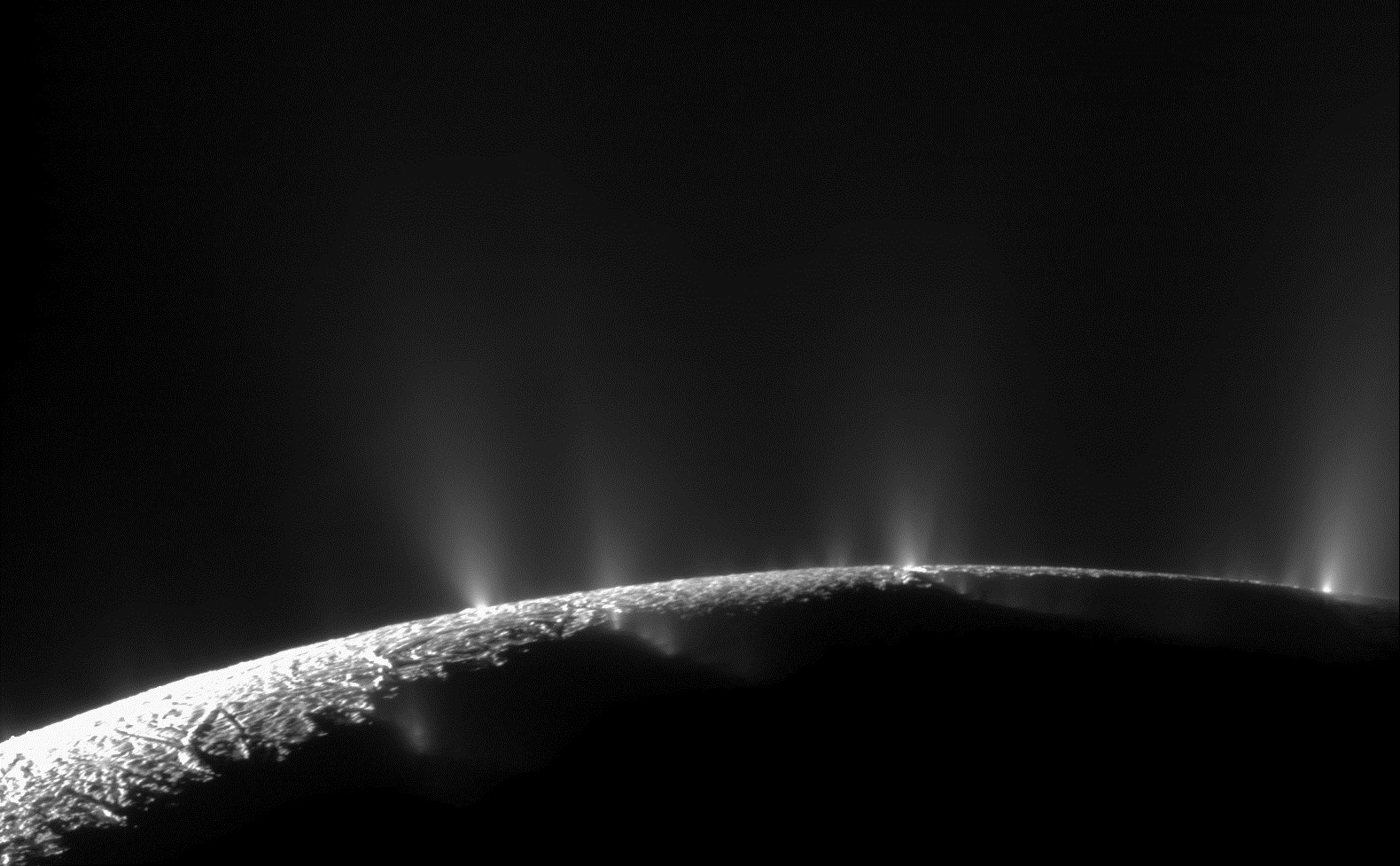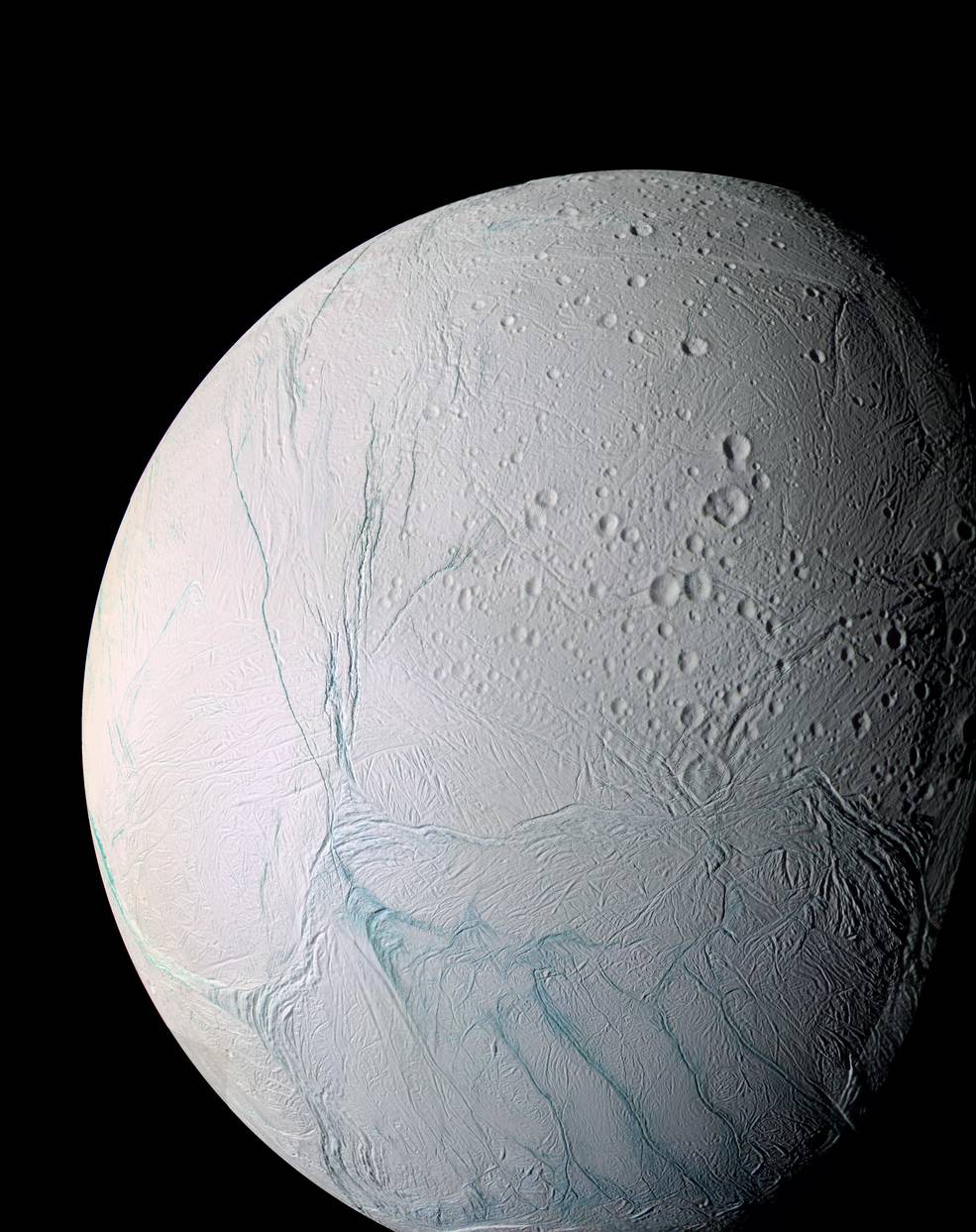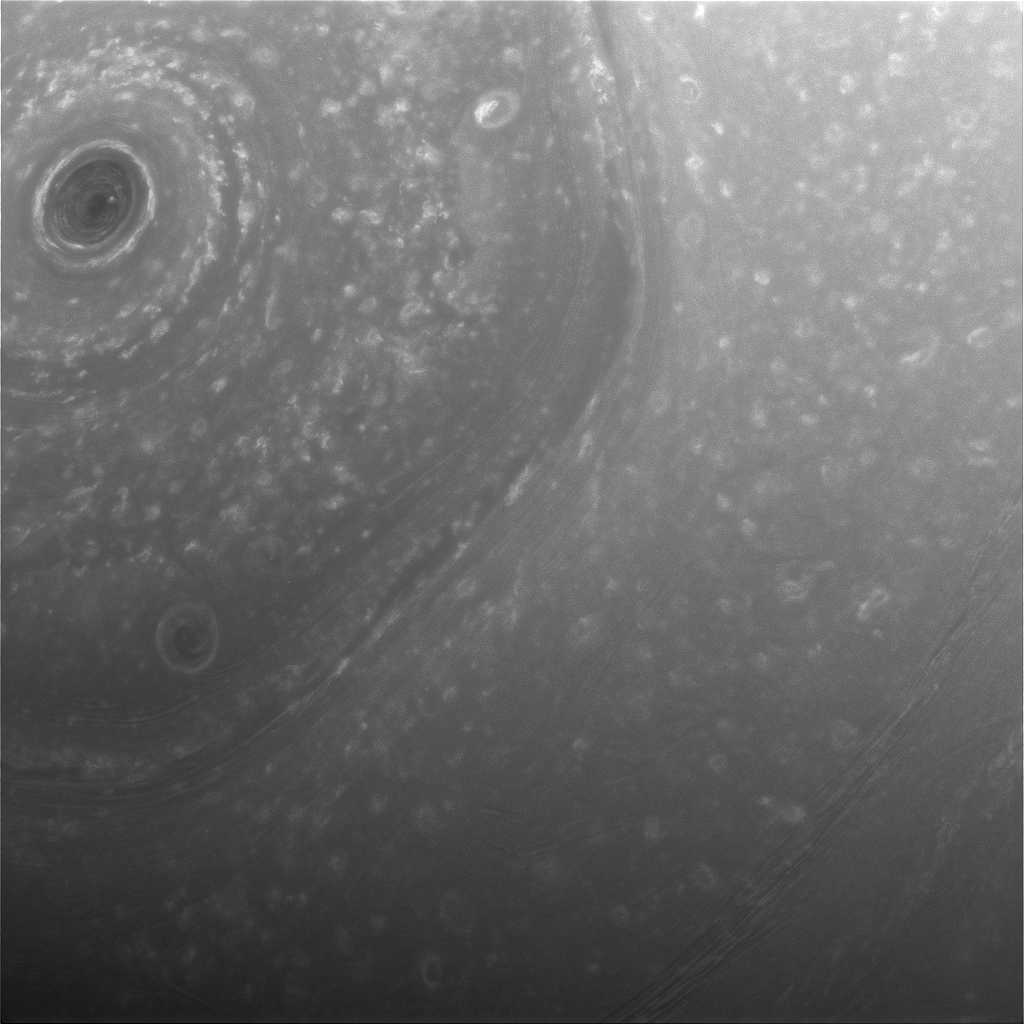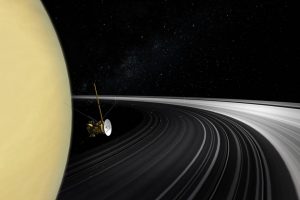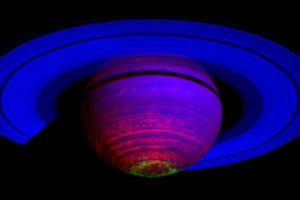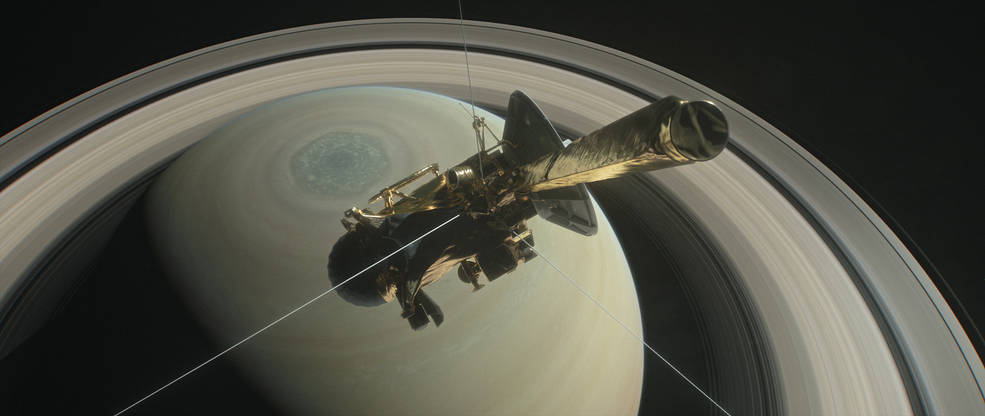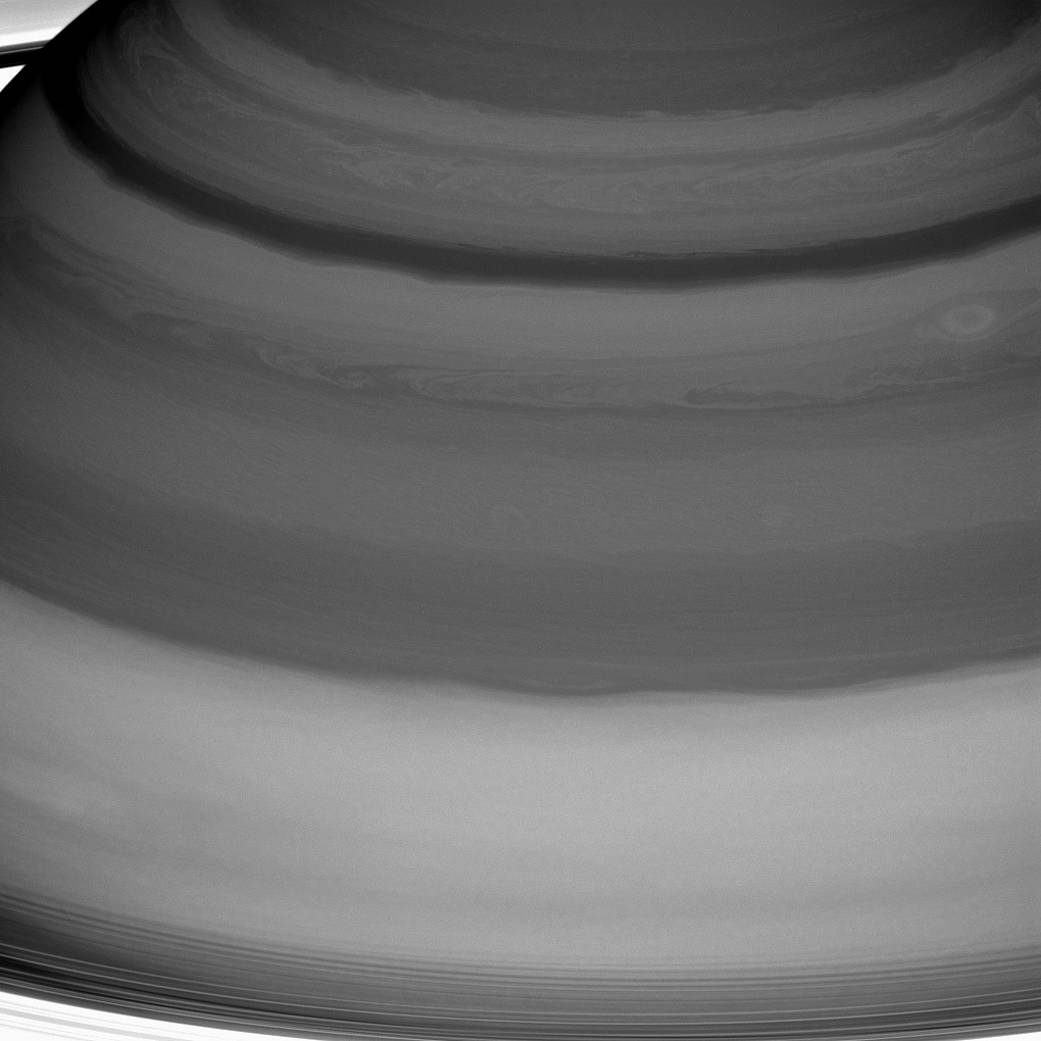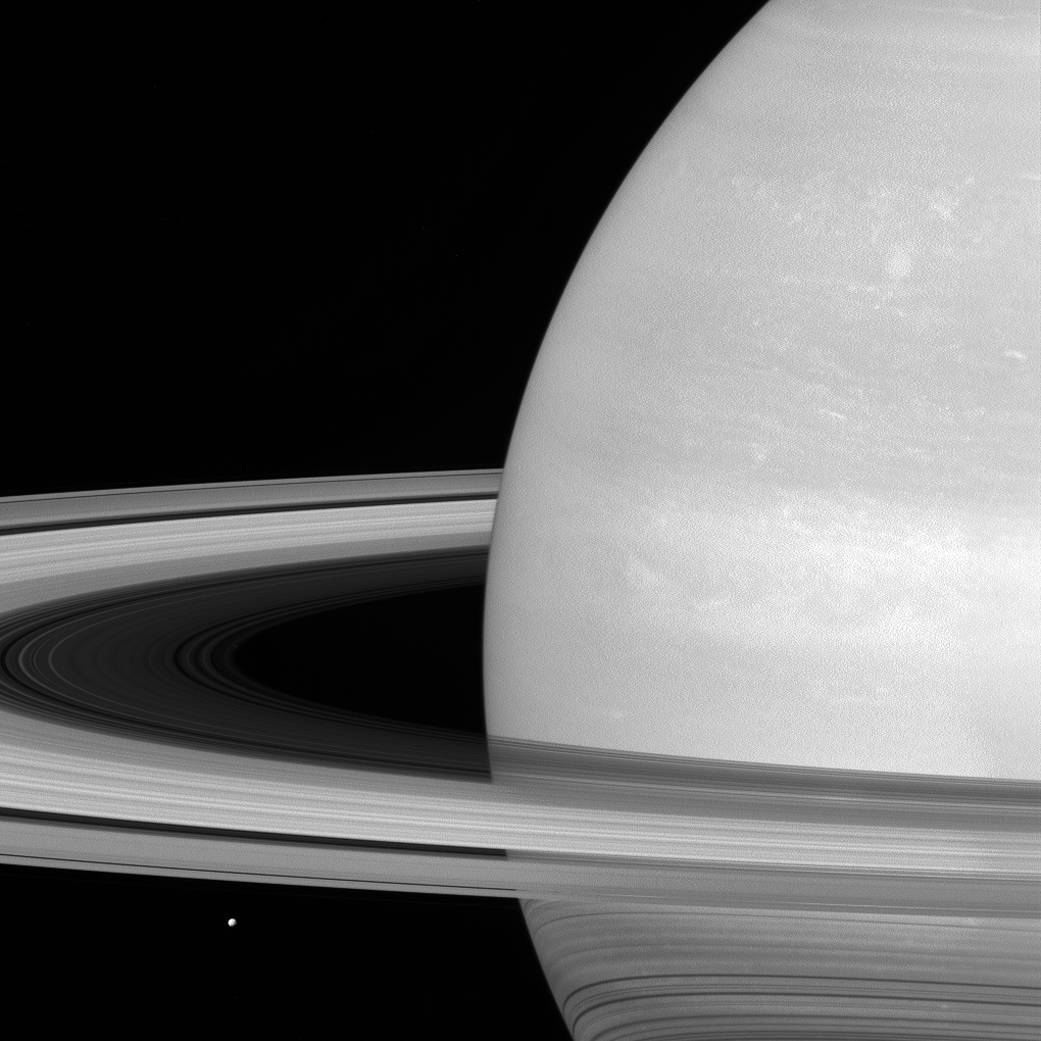This enhanced-color Cassini view of southern latitudes on Enceladus features the bluish “tiger stripe” fractures that rip across the south polar region.
エンケラドスの南方緯度をとらえたカッシーニによる画像では、色彩の画像処理を施すことで南極地帯に横切るように存在している青みがかった「虎柄の縞模様」の特徴が良く見て取れます。
Credits: NASA/JPL-Caltech/Space Science Institute
オリジナル記事:Cassini Sees Heat Below the Icy Surface of Enceladus
A new study in the journal Nature Astronomy reports that the south polar region of Saturn’s icy moon Enceladus is warmer than expected just a few feet below its icy surface. This suggests that Enceladus’ ocean of liquid water might be only a couple of miles beneath this region — closer to the surface than previously thought.
「Nature Astronomy」誌に掲載された新しいレポートでは、土星の氷の衛星エンケラドスの南極地域は氷の表面からわずか数フィート下のほうが暖かいということです。これは、この地域では地表のすぐ下数マイルのところにエンケラドゥスの液体の水の海があるということを示唆しています。
The excess heat is especially pronounced over three fractures that are not unlike the “tiger stripes” — prominent, actively venting fractures that slice across the pole — except that they don’t appear to be active at the moment. Seemingly dormant fractures lying above the moon’s warm, underground sea point to the dynamic character of Enceladus’ geology, suggesting the moon might have experienced several episodes of activity, in different places on its surface.
温度が高めの熱を「虎柄の縞模様」のような3つの屈折した形状の地殻構造から、今現時点では活動しているようには見えませんが、活発に熱の放出をするように見えます。これは現時点では活発に見えないことを除いて、極を横切って活発に通気する骨折です。エンケラドスの地表の下で眠っているように存在している暖かい海は、エンケラドスのダイナミックな地形を形成し、エンケラドスの異なる場所で起きた地殻活動の痕跡として地表に刻んだことを示唆しています。
The finding agrees with the results of a 2016 study by a team independent of the Cassini mission that estimated the thickness of Enceladus’ icy crust. The studies indicate an average depth for the ice shell of 11 to 14 miles (18 to 22 kilometers), with a thickness of less than 3 miles (5 kilometers) at the south pole.
今回の発見は、カッシーニとは別のチームによるエンケラドスの氷の地殻の厚さを推定した2016年の調査の結果と一致しています。その研究結果によりますとエンケラドスの南極の氷の厚さは3マイル(5キロメートル)未満で、氷の地表の厚さの平均値は11〜14マイル(18〜22キロメートル)です。
“Finding temperatures near these three inactive fractures that are unexpectedly higher than those outside them adds to the intrigue of Enceladus,” said Cassini Project Scientist Linda Spilker at NASA’s Jet Propulsion Laboratory, Pasadena, California. “What is the warm underground ocean really like and could life have evolved there? These questions remain to be answered by future missions to this ocean world.”
「これらの3つの活動していない特徴的な地殻周囲の温度が、周囲の温度と比較して予想外に高い原因を調べることで、エンケラドスの謎に迫ることができます。」とカリフォルニアのパサディナにあるNASAのジェット推進研究所のカッシー・プロジェクト科学者リンダ・スピルカーは言います。 「地下にある暖かい海は実際どのようなもので、そこで生命が進化しているのだろうか?これらの疑問は、将来の調査・研究によってエンケラドスの海の謎が解き明かされるのを待っています。」
More information about this study is available from ESA, the European Space Agency, at:http://sci.esa.int/cassini-huygens/58877-enceladus-south-pole-is-warm-under-the-frost
Preston Dyches
Jet Propulsion Laboratory, Pasadena, Calif.
818-354-7013
preston.dyches@jpl.nasa.gov
2017-068
Last Updated: March 14, 2017
Editor: Tony Greicius
訳者注:
オリジナル超高解像度画像はこちら:クリックで拡大表示(1024 × 1292)します。
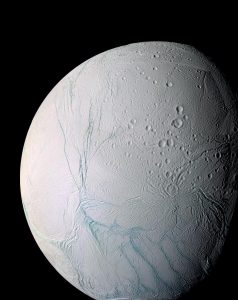
この記事ではエンケラドスの南極の氷の薄いところでは5Km下に水の海があるとしています。そこで土星からの引力の影響を受けるとした画像のような感じで水(海水?)が吹き出すということのようです。
